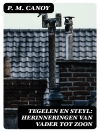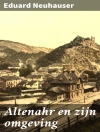In ‘Pictures of German Life in the 18th and 19th Centuries, ‘ Gustav Freytag offers a comprehensive exploration of the social, cultural, and economic fabric of Germany during a transformative period. This two-volume work employs a rich literary style that blends vivid narrative with keen observation, allowing readers to visualize the intricate lifestyles and customs of various German communities. Freytag’s meticulous attention to detail reflects an era marked by significant change, including the impact of industrialization and the rise of nationalism, making this text both a historical document and a literary representation of German identity in the given centuries. Gustav Freytag, a notable 19th-century German novelist and playwright, drew on his own experiences and the cultural milieu of his time to produce this seminal work. His background as a sociologist and interest in the interplay between society and literature significantly informed his writing. Freytag’s insights into mid-19th-century German life were shaped by his exposure to the Romantic movement and his desire to portray the complexities of his country’s evolving landscape, presenting a reflective yet critical perspective. This book is highly recommended for readers interested in German literature and history, as it provides an indispensable context for understanding the socio-cultural landscape of the 18th and 19th centuries. Freytag’s poignant illustrations of life during this period invite readers to immerse themselves in the past, making it a valuable resource for scholars and enthusiasts alike.
Mengenai Pengarang
Gustav Freytag (1816-1895) was a renowned German playwright, novelist, and journalist, best known for his literary contributions that reflect the socio-political landscape of 19th-century Germany. Freytag’s deep insights into the German spirit and social fabric were most eloquently presented in his seminal work, ‘Soll und Haben’ (1855), but his ‘Pictures of German Life in the 18th and 19th Centuries’ stand out for their detailed portrayal of different epochs. This particular work delves into the evolution of German society and offers an invaluable perspective on the cultural and historical contexts of his time. Divided into two volumes, ‘Pictures of German Life’ provides readers with a panoramic view of German life, capturing everything from the romanticism of the 18th century to the burgeoning industrial era of the 19th century.
Freytag’s prose is marked by its vividness and an emphasis on narrative technique. His works often exhibit a classical structure, something he famously theorized in ‘Die Technik des Dramas’ (1863), where he proposed the Freytag pyramid, a paradigm of dramatic structure that is still referenced in literary criticism today. An advocate of the principles of Realism, Freytag’s storytelling is characterized by its realism and attention to detail, an approach that lent authenticity and depth to his literary depictions of German life. Giving voice to the hopes and struggles of the bourgeoisie, his stories reflect the transformations of a nation navigating through the currents of modernity. Freytag’s legacy is that of a keen observer and a deft chronicler of the German experience, his works remaining a testimony to a pivotal era in German history.












